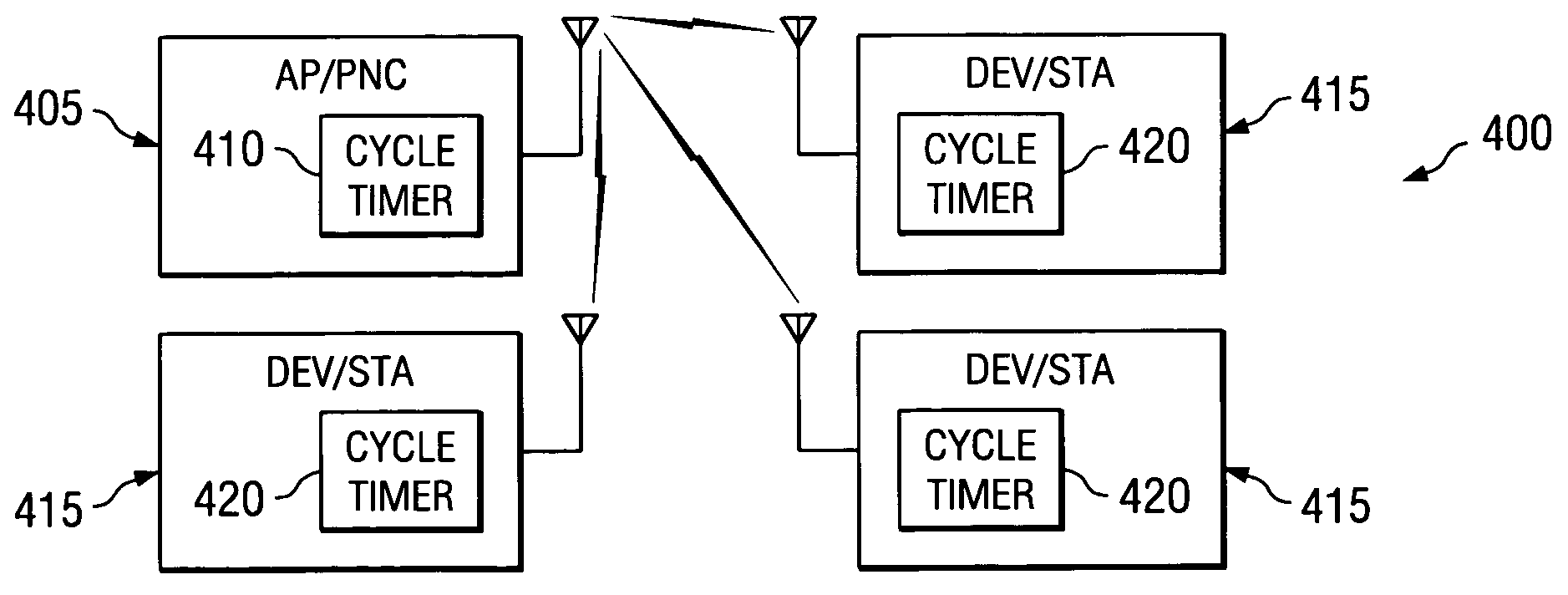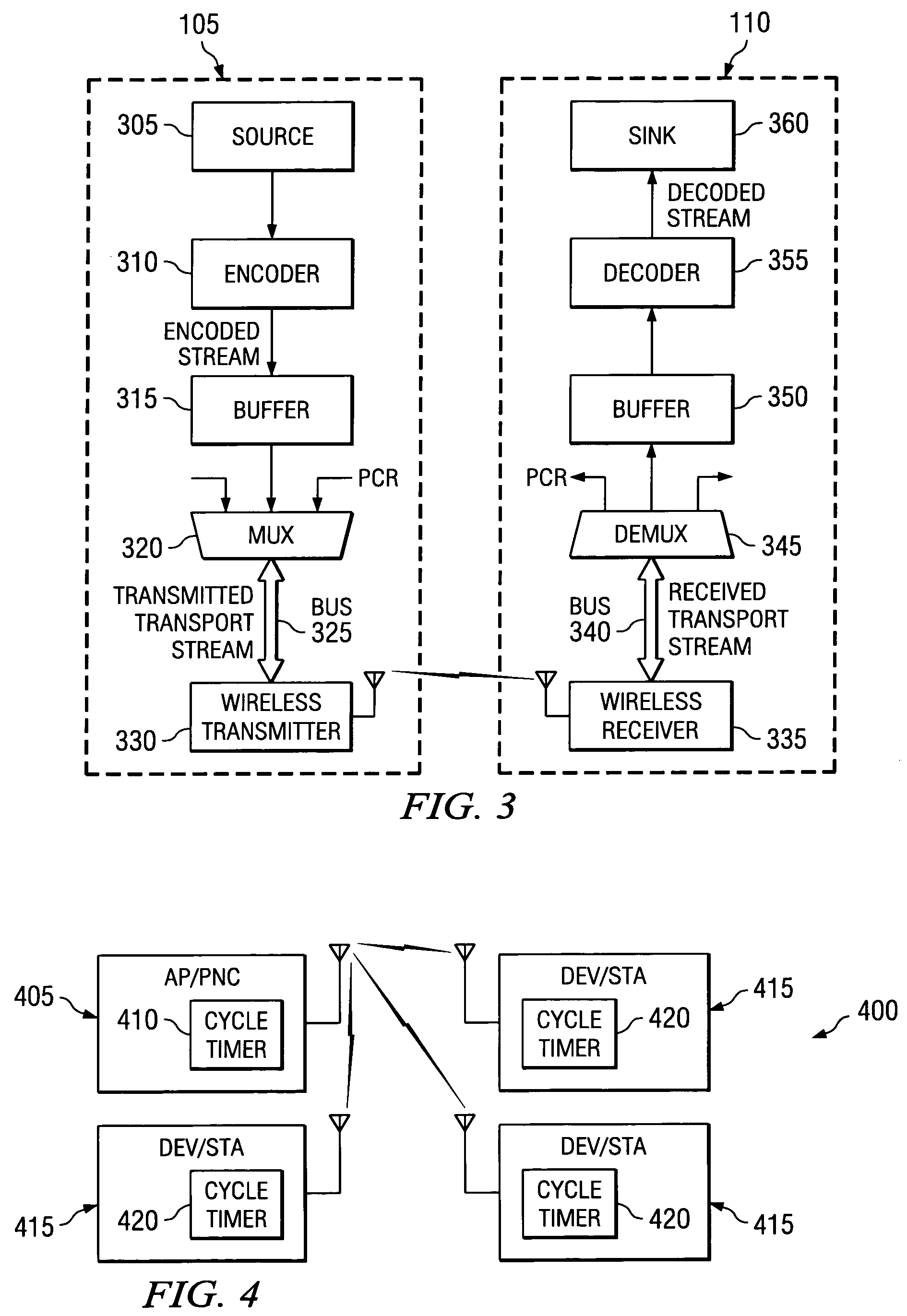Audio and video clock synchronization in a wireless network
a wireless network and clock synchronization technology, applied in the field of audio, can solve the problems of audible and visible glitches, latency and jitter, and application limitations of file transfers and other computer data related operations
- Summary
- Abstract
- Description
- Claims
- Application Information
AI Technical Summary
Benefits of technology
Problems solved by technology
Method used
Image
Examples
Embodiment Construction
Illustrative Embodiments
[0027]The making and using of the presently preferred embodiments are discussed in detail below. It should be appreciated, however, that the present invention provides many applicable inventive concepts that can be embodied in a wide variety of specific contexts. The specific embodiments discussed are merely illustrative of specific ways to make and use the invention, and do not limit the scope of the invention.
[0028]The present invention will be described with respect to preferred embodiments in a specific context, namely ultra-wideband (UWB) and IEEE 802.11 technical standard compliant wireless personal and local area networks that can be used to transport timing sensitive data, such as audio and / or video streams. UWB wireless personal area networks, in the United States, are compliant to a First Report and Order issued by the Federal Communications Commission entitled “FCC 02-48: Revision of Part 15 of the Commission's Rules Regarding Ultra-Wideband Transm...
PUM
 Login to View More
Login to View More Abstract
Description
Claims
Application Information
 Login to View More
Login to View More - R&D
- Intellectual Property
- Life Sciences
- Materials
- Tech Scout
- Unparalleled Data Quality
- Higher Quality Content
- 60% Fewer Hallucinations
Browse by: Latest US Patents, China's latest patents, Technical Efficacy Thesaurus, Application Domain, Technology Topic, Popular Technical Reports.
© 2025 PatSnap. All rights reserved.Legal|Privacy policy|Modern Slavery Act Transparency Statement|Sitemap|About US| Contact US: help@patsnap.com



